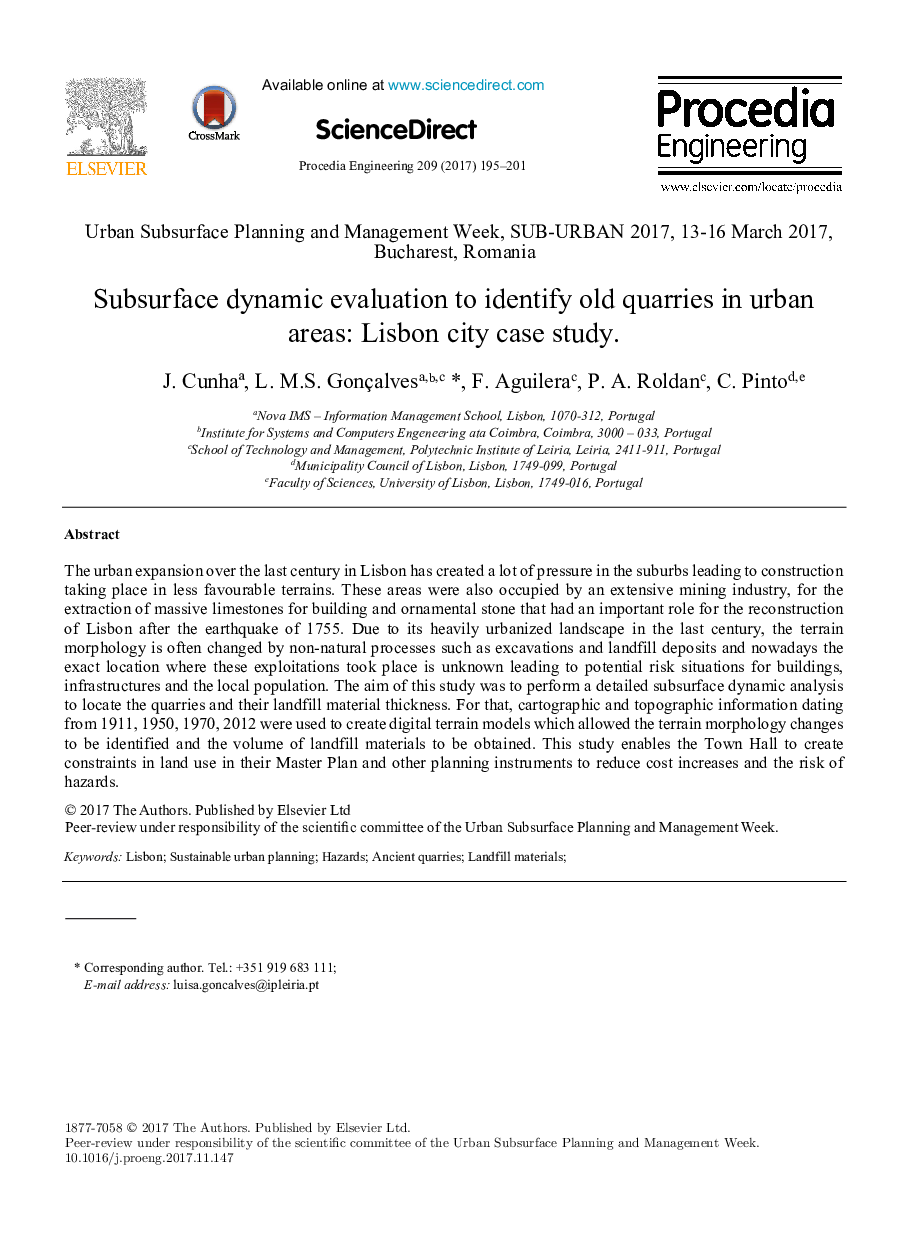| Article ID | Journal | Published Year | Pages | File Type |
|---|---|---|---|---|
| 7226926 | Procedia Engineering | 2017 | 7 Pages |
Abstract
The urban expansion over the last century in Lisbon has created a lot of pressure in the suburbs leading to construction taking place in less favourable terrains. These areas were also occupied by an extensive mining industry, for the extraction of massive limestones for building and ornamental stone that had an important role for the reconstruction of Lisbon after the earthquake of 1755. Due to its heavily urbanized landscape in the last century, the terrain morphology is often changed by non-natural processes such as excavations and landfill deposits and nowadays the exact location where these exploitations took place is unknown leading to potential risk situations for buildings, infrastructures and the local population. The aim of this study was to perform a detailed subsurface dynamic analysis to locate the quarries and their landfill material thickness. For that, cartographic and topographic information dating from 1911, 1950, 1970, 2012 were used to create digital terrain models which allowed the terrain morphology changes to be identified and the volume of landfill materials to be obtained. This study enables the Town Hall to create constraints in land use in their Master Plan and other planning instruments to reduce cost increases and the risk of hazards.
Related Topics
Physical Sciences and Engineering
Engineering
Engineering (General)
Authors
J. Cunha, L.M.S. Gonçalves, F. Aguilera, P.A. Roldan, C. Pinto,
